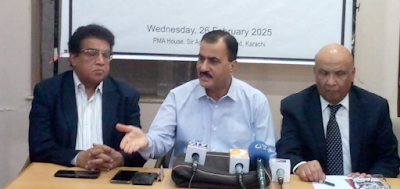Recurring flood devastation
Another monsoon, another reckoning — Pakistan’s floods demand foresight, stronger governance, and climate accountability.
Pakistan
once again finds itself grappling with the aftermath of a devastating monsoon
season — a recurring ordeal that now follows a grim pattern. This monsoon
season has brought heavy rains, cloudbursts, and overflowing dams that have
caused widespread destruction across provinces, claiming hundreds of lives,
washing away homes, livestock, and crops, and crippling infrastructure already
weakened by the floods of 2022 and 2024.
According
to reports, by mid-September this year, over 1,000 people — including 255
children — had lost their lives, while more than 1,100 others were injured.
Some 2.5 million residents of Punjab and Sindh were reportedly displaced. From
the rural heartlands to industrial centres, communities once again confront the
colossal task of rebuilding — not just homes and roads, but also livelihoods
and hope. Entire trades and small businesses have been swept away, while the
destruction of bridges, schools, and healthcare facilities has left communities
stranded and dependent on limited relief.
The
repeated cycle of devastation underscores the urgent need to move beyond
reactive relief. Each flood reveals how unprepared we remain despite years of
warnings about the escalating effects of climate change. Changing rainfall
patterns, glacial melt, and extreme weather are no longer distant threats —
they are reshaping Pakistan’s economy, environment, and health systems today.
Agriculture,
which sustains rural livelihoods and contributes significantly to GDP, remains
the most vulnerable. But climate impacts also ripple through trade, transport,
energy generation, manufacturing, and public health — sectors that must now be
examined through a climate-resilience lens. The health toll, in particular,
demands immediate attention. Contaminated water sources heighten the risk of
cholera and diarrhoeal diseases; stagnant water breeds malaria and dengue; and
disrupted health services mean unsafe births, untreated chronic diseases, and
missed vaccinations. Without swift and coordinated action, a second disaster —
in the form of disease outbreaks — may soon follow.
Even more
troubling is the growing strain on provincial health systems. Many local health
centres have been flooded or rendered non-functional, their supplies damaged,
and their staff displaced. For thousands now living in temporary shelters or
open areas, access to basic medical care has become uncertain. Unless
authorities mobilise quickly to restore these facilities and deliver clean
water, food, and vaccines, the humanitarian crisis could deepen further.
Urban centres like Karachi, Lahore, and Islamabad are no less exposed. The chaos following Karachi’s August downpour — with lives lost, schools and businesses shuttered, and streets turned into rivers — again laid bare the fragility of civic preparedness and the failure of authorities to respond in time. The capital and provincial governments must recognise that these are not isolated “rain emergencies” but part of a systemic climate crisis demanding long-term urban resilience planning.
No doubt,
the repeated adverse experiences of citizens in big cities have been
highlighting the dire need for developing a professional core unit — acting as
an apex coordination body — to guide civic and development agencies in managing
fragile urban infrastructure. It is the right time that vulnerable cities and
rural regions alike establish independent frameworks to address water
shortages, rising sea levels, melting glaciers, flooding, drought, heatwaves,
greenhouse emissions, food insecurity, and infrastructure disruption.
Pakistan
can no longer afford to treat monsoon devastation as an annual misfortune.
Climate change may be a global phenomenon, but the failure to prepare for its
predictable consequences is entirely man-made. The lessons are before us — the
question is whether we will finally act on them.
Originally published in Social Track, weekly, on September 26, 2025.





Comments
Post a Comment